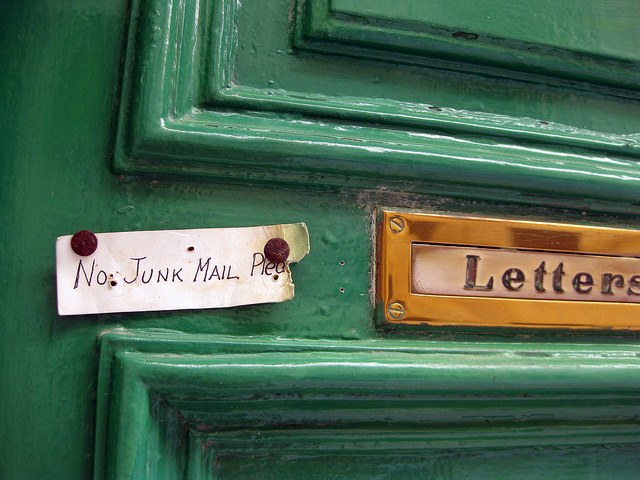
We are beginning a new column here at Outfield Fly Rule called “Answers On The Fly” This is a reader mailbag column, where you, the reader, ask your burning questions to be answered by our experts. We use the term “expert” somewhat loosely in this case, as the questions will be answered by OFR writers Brent Blackwell, Micah Smith, and Chris Jervis.
The reader mailbag will run on Mondays, with the frequency determined by the number of questions received. The concept is simple: you have questions, and you want answers. These can be questions about the Atlanta Braves, other MLB teams, the Atlanta Falcons…and with Grantland.com being shuttered, we’ll take up some of the pop-culture slack, too. Questions can be submitted the following ways:
- Email us
- Tweet us (@OFRSports)
- Post them in the Outfield Fly Rule Facebook group.
With the introductions and formalities out of the way, let’s get to this week’s questions!
[sc:InContentAd ]
Did the Braves fully commit themselves to a “rebuild” last year, or not? Will they fully commit themselves to one next year? If not, might we see a complete teardown in 2017 of a half-assed rebuild? (Yes, I know these are loaded questions).
– Steve R.
Micah: I don’t get how anyone can look at what the Braves accomplished over the course of one year and question if the front office fully committed to the rebuild. From the smaller trade of Tommy La Stella for Arodys Vizcaino to the creative trade for Touki Toussaint to the blockbuster trade of Jason Heyward for Shelby Miller and Tyrell Jenkins to the miracle trade of Melvin Upton Jr. (and all of his salary) and Craig Kimbrel (and all of his salary) for a great return in Cameron Maybin, Matt Wisler, and the 41st pick in the draft (Austin Riley), the front office has been as all in as humanly possible. There is no question here…only a very resounding answer.
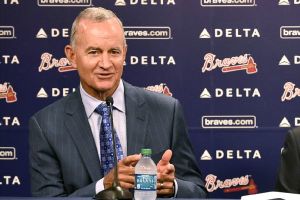
Think about this: at the end of 2014, Lucas Sims and Jason Hursh were our top two starting pitching prospects in a very shallow system. At the end of 2015, the Braves have Shelby Miller (trade), Matt Wisler (trade), Mike Foltynewicz (trade), Kolby Allard (draft), Touki Toussaint (trade), Max Fried (trade), Mike Soroka (draft), Tyrell Jenkins (trade), Manny Banuelos (trade), John Gant (trade), Ricardo Sanchez (trade), Zachary Bird (trade), and more. So many talented arms were added to the team over the course of ONE YEAR that it was easy to miss what would have been a devastating blow a year ago: Jason Hursh – our minor league pitcher of the year in 2014 – moving to the bullpen because of his struggles as a starter. A weak, shallow system is now loaded with great pitching talent that can either pitch for the Braves or be used in trades for other positions of need.
But not everyone has been all in on the rebuild. I have been incredibly frustrated with Fredi Gonzalez, especially after the Braves fell out of it in July and ended the sham of being a “contender.” He continued to play matchups in August and September instead of give opportunities to the younger positional players. This isn’t about tanking games on purpose, but about giving prospects opportunities to grow, 1) so they can get better, and 2) so the front office can better evaluate the young talent. For example, does Fredi need to give Hector Olivera some additional rest days? Yes. Does Fredi need to publicly state he is sitting Olivera to play match-ups because Olivera struggled in a limited sample against left-handed pitching? NO!!! Let him get some swings in against lefties! We didn’t trade Alex Wood and Jose Peraza to get a platoon player! Decisions like that are why Fredi is holding this team back.
Chris: Yes. Yes. No.
But seriously, I think Micah covered it well. I think some people may have the idea that Atlanta wasn’t “all-in” on a rebuild because of things the front office said, specifically the refusal to use the word ‘rebuild’. But the front office is in charge of a multi-million dollar business, and they very well can’t go out and tell their customers ‘Hey, we have no shot at being competitive this year and we know, but still send us your thousands of dollars for season tickets’. Things that are said publicly can’t be taken at face value, and you have to read between the lines of what is being said, while also looking at what is being done. And when you look at some of the guys who were brought in on short term contracts, it is clear that the Braves were setting themselves up for a lot of moves. Kelly Johnson, Jason Grilli, Alberto Callaspo (and later Juan Uribe), Jim Johnson, A.J. Pierzynski, Jonny Gomes…these are all guys with experience that teams making a run at the playoffs want: post-season experience, veteran, locker-room presence, or late relief experience. It was clear before the season ever started that the Braves were not simply relegating their moves to the off-season.
Atlanta still needs to accumulate some young players, both to give them depth (since prospects are often a crap shoot, no matter how highly rated) and trade chips to bargain with for pieces that are still needed. I expect a similar, but scaled back approach, this off-season. The Braves will probably make a move or two to fill holes, but I don’t see a splashy free agent signing (meaning a big name) or big trade (though John Hart has certainly surprised us before). I expect them to sit on a bit of money so that they can be big players in the international market and restock the pipeline with good, young, cheap players.
Brent: (I’m answering blindly, without reading Micah or Chris’ comments, just for fun) Yes, they’re committed to the rebuild. Now, the Braves were not your typical team in need of a rebuild, so it went a little differently. Most teams that do the tear-down rebuild are old teams hanging on to old, veteran contracts. Atlanta really wasn’t in that situation. Atlanta already had a bit of what teams tear down rosters to find – a young core. The question you ask yourself with every player is this: will this guy be on the next Braves playoff team? That’s really all it boils down to. With Justin Upton and Jason Heyward, just as with guys like Jim Johnson and Eric Stults and on and on, the answers were “probably not”, so the Braves turned those guys into players whose answers are now “maybe”. Some might not consider it a full rebuild unless you trade everyone, but Freddie Freeman is signed through 2021. Andrelton Simmons is signed through 2020. These guys remain on the Braves, because you approach the idea of trading them differently. They’re part of the next Braves playoff team (in the sense that every team should consider its next playoff team no more than 5 years away). They could be traded, but their trade wouldn’t be part of a rebuild. Their trade would simply boil down to Atlanta receiving more talent in return than it gave up.
As for 2017, I don’t think you’d tear things down at that point if it doesn’t work out, though you could certainly see the team re-ask the question from above. By then, the answer for Nick Markakis might change, and it might be different for Hector Olivera, or any other player with fewer years remaining than now.
So I guess my answer is that yes, the Braves are rebuilding, and they’re fully committed, but how that applies to each player is different. It doesn’t mean “trade him for prospects” for every player. When thinking about the rebuild, always think of that question.
[sc:InContentAd ]
So I really like the idea of Murphy or Zobrist on this Braves team. I know I know the money is there and they are getting older. But here is my thought, they both fill a need and Zobrist could fill a couple. I get the money situation but I think the Braves are in a situation with a lot of back loaded contracts to front load one or two where we pay a lot early and in the back of the contract and their older years we wouldn’t be paying them nearly as much. I wanted to wait for the podcast to ask this question but I’m impatient.
– Benjamin R.
Micah: I have always liked everything about Ben Zobrist: he can hit consistently, he can play good defense, he can play anywhere, and he’s a team player. The problem with Zobrist is that he’s old. He’s heading into his age 35 season, and he will get a multi-year deal based on past performance. I’m just not sure if I’m comfortable signing him to the three years he can probably get when those three years are 35, 36, and 37.
I think Daniel Murphy could fit nicely into the Braves plan if he hadn’t jacked his price up with his spotlight performance in the playoffs. He’s also likely getting a qualifying offer, which diminishes interest. He’s a nice role player, but not worth a big contract and loss of a top 40 pick.
Perhaps my favorite is 32-year-old Howie Kendrick, who is a consistent offensive performer and good defender, but he too might be a bit pricey and get the dreaded QO.
I have age and price questions about these guys, but second base is a good spot to invest in a Free Agent. There are several productive starters who can put up somewhere in the neighborhood of 2-3 WAR on a reasonable contract (maybe 3-yrs/$30M range) to bridge the gap to Ozhaino Albies.
It is also an area where the Braves are particularly weak, so it would be adding WAR instead of replacing it. Consider this: Jace Peterson’s 1.1 fWAR wasn’t great and was largely due to good defense (he had an 80 wRC+), but it looks great compared to the 0.5 WAR Dan Uggla put up in 2013 and the replacement level production from a hodge-podge of replacement level players in 2014.
Still, if one of these three guys falls into a reasonable price range, I’d love to grab any one of them, even if we lose the supplemental round pick (from Miami via the Dodgers trade) due to the qualifying offer. Peterson could then be a great bench piece (or trade piece) instead of a mediocre regular.
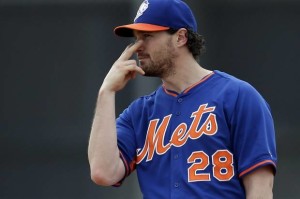
Chris: I love Zobrist, but not at that age, the expected years, and the expected Average Annual Value (AAV). The day and age of players being regularly productive in their late 30s ended for most players when MLB began testing for certain substances. That’s not a knock on Zobrist; if he were even two years younger, I would feel better about a three year deal.
I like Murphy on a short-term deal, if the money is right. However, with this being his first, and likely only, chance at a big-money deal, he’s probably looking for more than three years and more than $16M AAV. But, if he was willing to take 2-years/$22M, I might do that. His skill set, except the defense, seems to be one that could age well. But that defense…oh, man. I could see an AL team taking a run at him for a 5-year deal, with the DH being a fallback option that we don’t have. Second base is an area of needed improvement.
Brent: I’m glad we’re finally acknowledging that 2B is a need. Jace Peterson turned out to be what we thought he was when he was acquired – a helpful utility guy that is out-of-place starting every day. Here are my thoughts on both Daniel Murphy and Ben Zobrist.
Daniel Murphy made $8M this year in his final arbitration season and had a huge postseason, despite perhaps the costliest error of the year. This all suggests he’ll seek and get a pretty big payday. Second basemen often decline quickly due to the wear and tear, so I’d be hesitant to guarantee significant money over the long term to a 30+ second basemen. Braves fans should know better than any how quickly a 30-something 2B can go from All-Star to a liability. Murphy is likable enough, but Atlanta’s dollars may be better spent elsewhere. He’s a nice line drive hitter, but the power isn’t really a long-term asset and the defense isn’t really reliable. I don’t think I’d spend $10M a year for that, and it might cost significantly more than that to get Murphy.
Ben Zobrist has long been a player I’ve coveted, because his value was just always so underrated. Unfortunately, as Zobrist exited his prime this year, so too did an aspect of his game that always drove his value: his defense. He power went down a gear when he got a couple of years into his thirties, but the defense was still strong until 2015. There’s a chance it’s just a one year blip in the defensive data, and it’s true that the proper sample size for defense is around 3 years. However, when a 34-year-old who was always consistently good takes a sudden decline, and it coincides with a sudden drop in stolen bases, you at least acknowledge that the inevitable might be near. I think Zobrist will remain a helpful role player, worth maybe up to 2 wins a season, but like Murphy, the market could matriculate enough for him where he just won’t be worth the risk to the Braves. It’s not that Zobrist might not be worth his contract as much as it’s the opportunity cost of signing him. Giving Zobrist 3 years and $36M (or whatever it will cost) means you won’t be able to give that money to somebody who is more of a need. Signing Ben Zobrist might mean not signing Shelby Miller. It’s a shame, because Zobrist was always a guy I’ve admired from afar, but I don’t think the timing is right for the Braves to chase a luxury addition. Win in 2018 and make the franchise more profitable, and maybe this is a move that can be made further down the road.
[sc:InContentAd ]
Hector Olivera…LF next year or 3B? How do you see his numbers projected for next year?
– Brian S.
Micah: Hector Olivera is a bit of a mystery because he played in Cuba during the embargo and didn’t play much the last couple of years due to an injury, followed in short order by fleeing the country. I will say this: I have yet to read a scouting report that has said anything other than this guy can hit.
Last year, we saw a guy who was rusty from not playing much organized ball for a few years, and he might take a bit of time to adjust (which is why getting him into some games in 2015 was important), but I expect him to be a good-not-great hitter in 2016.
In 2015, he only had 87 major league plate appearances, and in that first taste of the big leagues, he had a 97 wRC+. In other words, he was a league average hitter. Don’t forget this guy is a rookie and is our top prospect. He is older, but he is legit. The question for me is his defense and his durability.
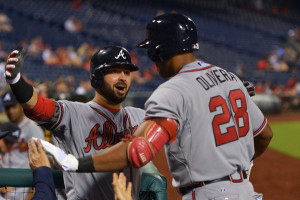
Chris: There was recent news that Hector Olivera would be playing some left field in the winter leagues. I think that is more for the medium future (2-3 years) than it is for the immediate future. Getting him time in LF gives Atlanta more flexibility on defense, and it gives them more options in the event that Adonis Garcia or Rio Ruiz or someone develops into a capable MLB third baseman. I expect that Olivera plays the majority of his games at 3B in 2016. Where he plays in 2017 could be dependent on the development of other players.
As to his numbers…like Micah said, the consensus on Olivera is pretty clear. Virtually every scout that has seen him has said he can hit. When people suggest he could be a middle of the order or 4/5/6 hitter, they aren’t necessarily talking about power. He’s not going to be a 30 HR guy, but he should be able to drive in some runs with consistent hitting and on-base abilities. He’s primarily a gap doubles hitter, who (at least for nine years in Cuba) walked twice as often as he struck out. In 2015, despite not having played competitive baseball in 18 months, Olivera still managed to post a .272/.326/.376 line in 135 plate appearances, across six teams. That’s not great, but it’s pretty good for a guy whose last game was in 2013. He exhibited the plate discipline he was known for, striking out less often than Nick Markakis. Those skills should at least remain the same, or likely improve, as his timing and stamina return.
Brent: I’m pretty optimistic about Olivera offensively. I could see him being a .275 BA, .350 OBP, 20 HR guy with good baserunning and good defense. He probably could play LF, but I still like him fine at 3rd. He’s athletic, and I’m interested to see how year 2 in the US treats him.
[sc:InContentAd ]
If I may make a suggestion, could you guys explain some of the sabermetric terms in detail? You guys haven’t done that in a while and it would be nice to see. Start with the basic terminology, I guess. Explain how each stat works and how it’s used to measure a player’s talent.
-Luis R.
Chris: This is probably a little too broad for a mailbag, and Brent and I have already talked about working this into a podcast. Oh, by the way, we’re working on a podcast that will debut soon, so stay tuned. In the meantime, a great place to get started on the whys, whats, and hows is the Fangraphs Library.
I think the biggest disconnect with some fans and Sabermetrics comes from simply not knowing or understanding what Sabermetrics is. Many fans, especially casual fans who don’t follow the game as closely as some nerds like Brent do (okay, me too), just don’t understand why we need so many new stats. Batting Average, ERA, and RBI have been good for 100 years or more; why do we need something different now? Well, we have far more data available to us now than they did 100 years ago. Candles were a perfectly viable and useful form of illumination for hundreds of years, but that doesn’t mean that we should still use them as a primary source if electricity is available.
The simple (but incomplete) answer is that Sabermetrics is an attempt to get the information being sought, free from as much bias or subjective interpretation as possible. Many people who rely on the ‘eye test’ are very well qualified. But no matter how qualified they are, they can’t see every player on every team make every play of every game. Human nature is very susceptible to a whole assortment of cognitive biases. Sabermetrics is merely an attempt (in part) to remove much of that subjective thinking.
What makes Sabermetrics work is that it uses the scientific method. That doesn’t mean that players are being reduced to a number. It means that when a new statistic is developed or a new concept is discovered, it is tested. Then it is published. Then it is tested by others. It’s an open source method of analysis; errors will be pointed out by others in the field. But anyone who uses stats only – new, old, Sabermetric, or otherwise – is just not getting all of the information necessary to evaluate and analyze player performance. By the same token, people who really only on their eyes are also getting only part of the picture. There seems to be this thought process that one can only be a ‘numbers’ guy or an ‘eye test’ guy. It’s not an either/or; both can and should be used simultaneously. And no metric is perfect. But because it isn’t perfect doesn’t mean we should stop trying to improve them.
As to what stats to use…I particularly like using wRC+ to gauge batting contributions. We know that certain events have different effects on creating runs. For example, a walk is good, but a single is better. As good as a single is, a double is even better. Each of these events contributes differently to the likelihood of a run scoring. OBP and Batting Average treat all of these events the same; getting a walk is treated the same as hitting a home run. What wRC+ does is weight each of those events by the likelihood that they contribute to a run scoring. We also know that hitting in some parks is much easier than hitting in others. A .300/30/100 line in Colorado is routine, but that same line in San Francisco is much harder to acquire. wRC+ adjusts the batter’s offense for both the park and league he played in, so we can accurately compare players across multiple varying factors. The final thing it does is weigh all of that against league average, setting the league average at 100. Anything above 100 is better than league average, and anything below is worse. Because is adjusted against the specific year and specific players and parks in that year, t can be used to compare players across era. We can compare Ty Cobb to Mickey Mantle to Pete Rose to Barry Bonds to Freddie Freeman.

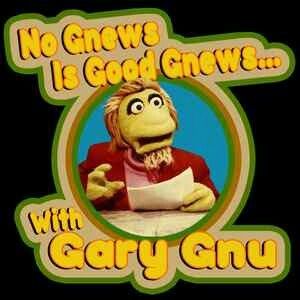
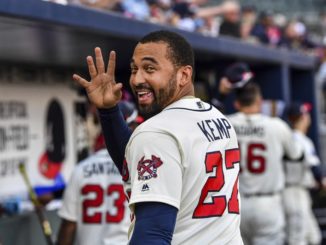
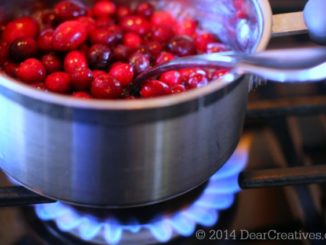
Leave a Reply